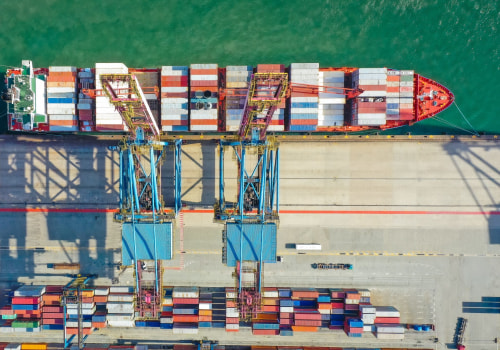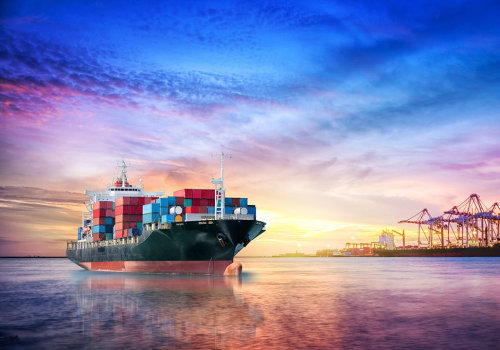When it comes to shipping cargo, LCL (Less than Container Load) shipping is an economical and efficient option. It requires careful preparation to ensure your cargo is loaded and unloaded safely. From properly packing the cargo to providing the necessary documents, there are many steps involved in preparing your cargo for LCL shipping. In this article, we will discuss how to properly prepare your cargo for LCL shipping, so that you can ensure your shipment arrives safely and on time. When preparing your cargo for New Jersey local movers quote LCL (less than container load) shipping, it is important to familiarize yourself with the necessary documentation. This typically includes a commercial invoice, bill of lading, packing list, and any other documents that are specific to the type of cargo you’re shipping.
Be sure to check with your freight forwarder or shipping company for all necessary paperwork. Next, you’ll need to choose the right packaging materials. It’s important to use appropriate materials that will keep your cargo safe during transport. Depending on the type of cargo, you may need to use wooden crates, corrugated boxes, shrink wrap, bubble wrap, and other materials to secure and protect your cargo. When packing multiple items in a single container, make sure each item is securely wrapped and cushioned against each other to reduce the risk of damage.
You’ll also need to pay attention to the weight and size of your packages. Be sure to not exceed the weight limit set by the carrier. Additionally, some carriers have restrictions on the size of packages they can accept. Be sure to check with your carrier before shipping your package to confirm that it meets their requirements. Once you have chosen the right materials and packaging for your cargo, be sure to label it correctly.
All packages should be clearly labeled with your name, contact information, destination address, and any other relevant information. If you’re using a freight forwarder or third-party logistics provider, make sure they have all the necessary information as well. This will help ensure that your package arrives safely and on time. Finally, when preparing your cargo for LCL shipping, it is important to pay attention to safety regulations and best practices. Be sure that all packages meet safety standards and are properly sealed.
Additionally, be aware of any hazardous materials regulations that may apply and take all necessary steps to ensure the safety of your shipment.
Documentation Requirements
When preparing cargo for LCL shipping, there are certain documentation requirements that must be met. These documents provide information about the goods being shipped, including the origin and destination of the shipment, as well as details about the contents. Common documents that are needed for LCL shipping include commercial invoices, packing lists, bills of lading, and export and import declarations. Commercial invoices are legal documents that provide information about the transaction between the seller and buyer. They include information such as the date of sale, the itemized list of goods being shipped, and the currency used for the transaction.Packing lists provide information about what is included in each package, including a detailed list of items, weights, and measurements. Bills of lading are contracts between the shipper and carrier that detail the terms of the shipment. Export and import declarations are required for shipments crossing international borders. These documents provide information about the goods being shipped and their origin, as well as any duties or taxes that may be due. Having all of these documents in order before shipping can help ensure that there are no delays in your shipment.
Packing Requirements
When preparing your cargo for LCL shipping, it is essential to use the correct packaging materials and to pack the items correctly.Depending on the type of goods, you may need to use boxes, crates, pallets, or other containers. Additionally, you must ensure that the items are securely packed and protected from damage. When packing multiple items into a single container, you must take extra care to ensure that all items remain secure. This involves using packing materials such as foam, plastic wrap, and bubble wrap to separate and cushion items from each other. Additionally, the items should be secured in place with tape or straps to ensure that they remain secure during transit. For most LCL shipments, you will need to provide a packing list of all items shipped.
This list should include information such as the number of packages, the type of goods, weight, and measurements. Additionally, it's a good idea to include photographs of the packed cargo for additional documentation.
Weight and Size Requirements
When preparing cargo for LCL shipping, it is important to be aware of the weight and size requirements for each shipment. Carriers may have restrictions on the size and weight of the items being shipped, so it is important to be aware of these before packing your goods. The size of the items being shipped should not exceed the standard container size limits, and the weight of each item must be within the range specified by the carrier. The maximum dimensions of an LCL shipment are usually specified by the carrier.These will usually vary depending on the type of goods being shipped, but typically have an upper limit of about 10 cubic meters in volume, and a total weight limit of up to 1000 kg. It is important to check with your carrier beforehand to ensure that your shipment does not exceed these limits. It is also important to consider the size and shape of the items you are shipping. Some carriers may have restrictions on the shape and size of items due to space limitations in their containers. Additionally, carriers may have restrictions on items that are particularly large or heavy, such as machinery or industrial equipment. Before packing your items, it is important to review all weight and size requirements for your shipment with your carrier.
This will ensure that your cargo is properly packed and documented, and will help you avoid any delays or additional costs associated with exceeding these restrictions.
Labeling Requirements
When preparing your cargo for LCL shipping, labeling is an important step. Proper labeling helps ensure that your cargo arrives at its destination safely and on time. It also helps to ensure that the shipment is properly documented and tracked during transit. To ensure that your cargo is properly labeled for LCL shipping, there are several key pieces of information that you will need to include.Item Description: Be sure to clearly label each package with a description of the contents. This should include the type of item, as well as any other relevant details such as size, weight, color, etc.
Destination Address:
You will need to clearly label the destination address of each package. This should include the full name and address of the recipient.Sender Information: Each package should also be labeled with the sender's information, including name and contact details. This will help ensure that any questions or issues with the shipment can be handled quickly and efficiently.
Tracking Information:
Tracking information should also be included on each package. This will allow you to track the progress of the shipment from start to finish.Special Instructions: If there are any special instructions or requirements for delivery of the shipment, be sure to include them on the label. This will help ensure that your cargo is delivered according to your specifications. By following these simple labeling requirements, you can be sure that your cargo is properly prepared for LCL shipping. Proper labeling ensures that your cargo is safe, secure, and properly documented and tracked throughout its journey. When preparing your cargo for LCL shipping, it is essential to ensure that all necessary documentation, packing requirements, weight and size requirements, and labeling requirements are met.
Doing so will help ensure a successful shipment and reduce the risk of delays or losses. Make sure to research the necessary documentation requirements, choose the appropriate packaging materials, pay attention to weight and size requirements, and label your packages correctly. By following these steps, you will be well on your way to a successful LCL shipment.







